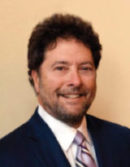Note: Fund updates appearing in this column are not applicable to the AFM’s Canadian pension fund, known since August 2010 as Musicians Pension Fund of Canada.
To improve its funded status and restore its health over the long term, the American Federation of Musicians and Employers’ Pension Fund (Fund) needs additional employer contributions as well as good investment returns. For the plan year that ended March 31, 2017, higher employer contributions and strong investment performance kept the Fund out of critical and declining status for the plan year that began April 1, 2017. Whether the Fund can stay out of critical and declining status in the future will depend in part on income each year from employer contributions and investment returns.




